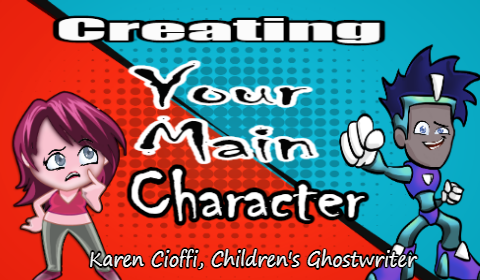I read an excellent article by Jerry Jenkins, an author of more than 186 books and a New York Times bestselling novelist. This is a writer who knows about writing.
The article was about creating memorable heroes.
Every author wants to be able to do this. So, below are the first few tips Jenkins offered, along with my own spin on them and making them relevant to children’s writing.
1. Name him right.
A name isn’t just a name. Giving your main character (MC) the right name matters.
I’ll use my middle-grade fantasy book, “Walking Through Walls”, as an example.
The story is set in sixteenth-century China.
What names come to mind?
Harry, Shawn, Dale, Justin, Juan, Saheb? I don’t think so.
If you want to keep the flavor of the story authentic, you’ll need to use appropriate names. The MC in “Walking Through Walls” is Wang.
2. Get him out there.
You’ve got to get your MC out there in front of the audience right away.
You don’t want any confusion as to the MC. The reader needs to make a quick connection. The MC should be the first character introduced in the story.
This is especially true with young children’s books.
3. The reader should be able to picture the main character.
This may not be relevant if you’re writing a children’s picture book or even a chapter book, as most of them have illustrations. But if you’re writing a middle grade, you will need to describe your MC somewhat.
Just give enough information for the reader to be able to imagine what your MC looks like.
Is he tall? Is she fair or dark? Is she thin? Does he have any unusual characteristics?
You want the readers to be able to picture the characters in their own minds – to create their own image of them. Whatever information you leave out, the reader will fill in the gaps.
4. He’s got to have a backstory.
Okay, this isn’t relevant to picture books as they’re too short for backstory. However, with other stories, the MC needs to be realistic and this means the character needs a life.
Using “Walking Through Walls” again, it’s quickly revealed that Wang has a father, mother, and sister. It’s also quickly revealed that he’s a dreamer and doesn’t like to work. And, he wants the fast track to fame and fortune.
This was done within the first couple of pages.
Other aspects of your character that might be conveyed are:
– Is he smart?
– Is he an athlete?
– Does he have lots of friends?
– What are his innate qualities?
– Is he a follower or a leader?
– What are his goals?
– What are his hobbies?
– What makes him happy, mad?
– What he’s afraid of?
– Is he outgoing or shy?
– What’s his family life like?
The list can go on and on. Use the qualities or characteristics that are relevant to your story.
5. Make him realistic.
I wrote an article a few years ago about your character being one, two, or three-dimensional.
You absolutely need a three-dimensional character.
He needs good qualities, bad qualities, things he’s good at, things he’s not good at, and so on and so on. You need a character who is life-like.
Along with this, he needs a mutlifaceted personality. What I mean by this is, a boy will act differently with his brother, his friend, a girl he’s sweet on, his teacher, his coach, his mom, his dad, and so on.
Our personalities are able to adapt to the interactions we have. You don’t want an MC who acts the same with all secondary characters and in all situations. He needs to portray realistic feelings and reactions.
6. He’s got to be heroic.
While your MC needs to be human and flawed, he must also learn from his failures, which is accomplished by overcoming the obstacles thrown in his way.
I love the way Jennings put this: “While striving to make your main character real and human, be sure to also make him heroic or implant within him at least the potential to be heroic.”
When writing for children, especially young children, the MC must prevail. He needs to overcome his obstacles and emerge smarter, stronger, wiser, or happier. Whatever the growth is, it’s got to be there.
Going back to Wang, while he’s kind of a slacker, he feels a need to help his friend even though it would mean fighting against warriors. There’s more to the story that makes him heroic, but simply wanting to help a friend in need is enough.
To read Part 2 or this article, click the link: 5 Power Tips on Creating Memorable Characters
Reference:
10 Tips to Developing Your Characters

I’m a working children’s ghostwriter, editor, and coach. I can help turn your story into a book you’ll be proud to be the author of, one that’s publishable and marketable.
OTHER HELP I OFFER:
FICTION WRITING FOR CHILDREN COURSE
A guided self-study course and mentoring program.
HOW TO WRITE A CHILDREN’S FICTION BOOK
A DIY book to help you write your own children’s book.
You can contact me at: kcioffiventrice@gmail.com.

Secondary Characters – Are They Important?
Children’s Stories: Story vs. Plot
10 Tips to Creating an Immersive Setting


9 thoughts on “6 Power-Tips to Creating Your Main Character”